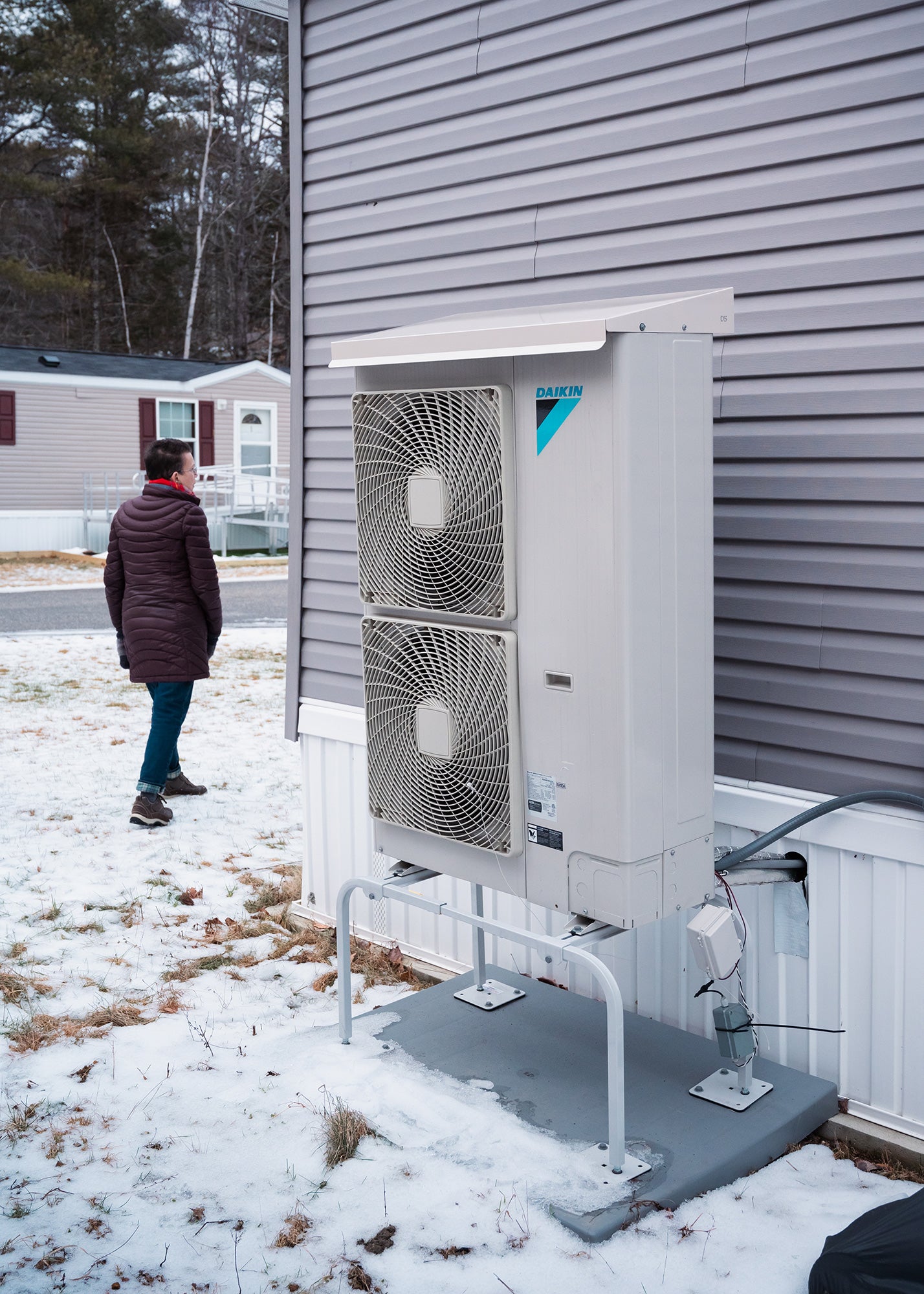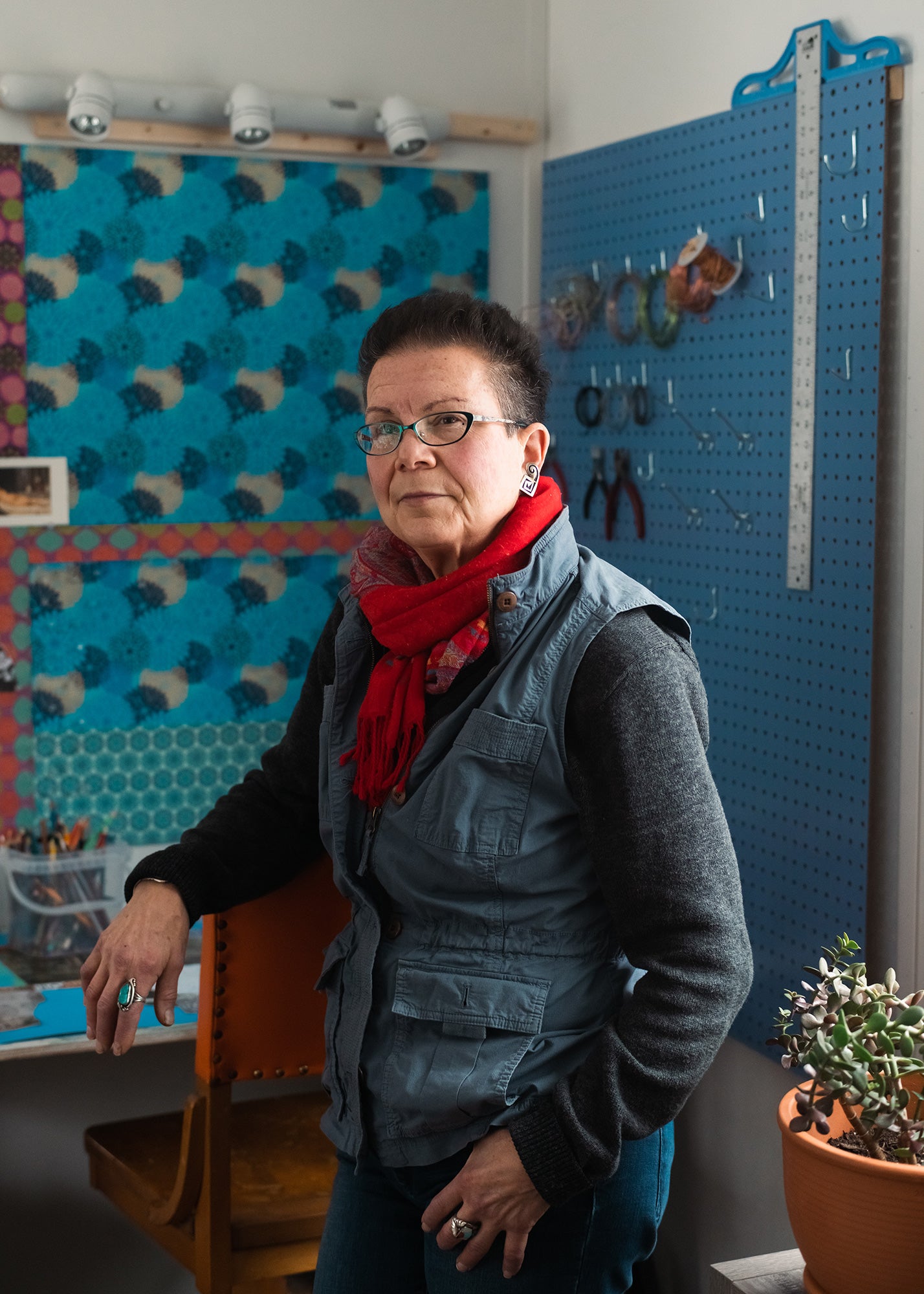March 27, 2025
Make Your Home Cleaner and Comfier with a Heat Pump
Heat pumps give off none of the unhealthy fumes of traditional furnaces — and hold a steady temperature better.
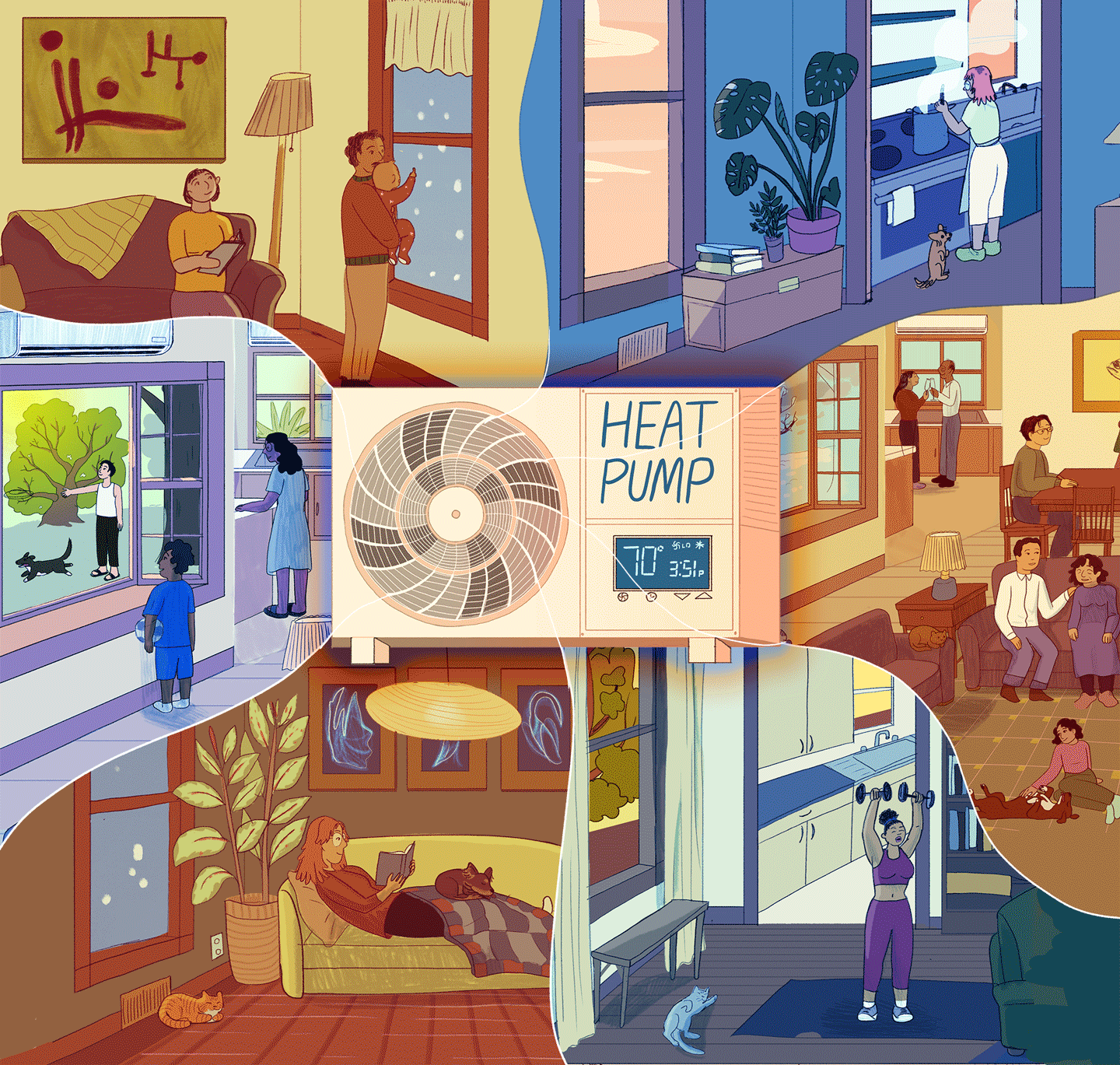
The laundry machine, color TV, the microwave – each generation has their life-changing home appliance. Ours? The humble heat pump. This simple appliance is quietly cleaning up pollution from the air in our homes while delivering next-level coziness.
And while there’s no silver bullet climate solution, heat pumps come pretty close.
Instead of producing heat by burning gas or other fossil fuels, these state-of-the-art magic machines use electricity to move heat from inside or outside buildings, making them two to four times more efficient than traditional combustion technologies like gas furnaces or water heaters.
Here’s How Heat Pumps Work
You can think of a heat pump like an air conditioner, but one that also works in reverse.
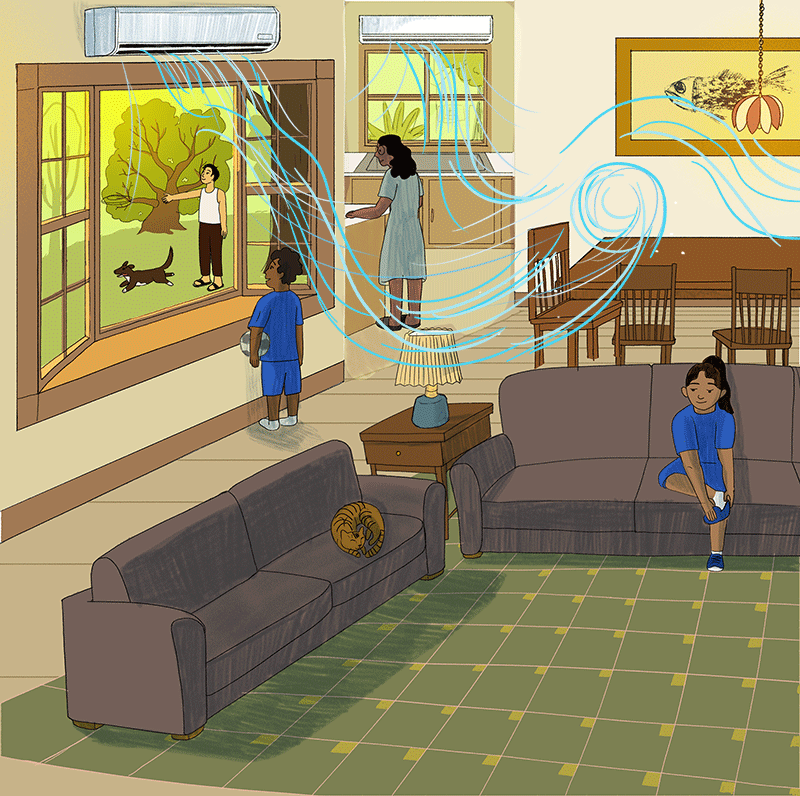
Like your typical A/C unit,
heat pumps provide cooling
by pulling heat from the air
inside your home
and moving it outside.
But unlike an air conditioner,
heat pumps can also warm your home
by pulling heat from the air
outside into your home.
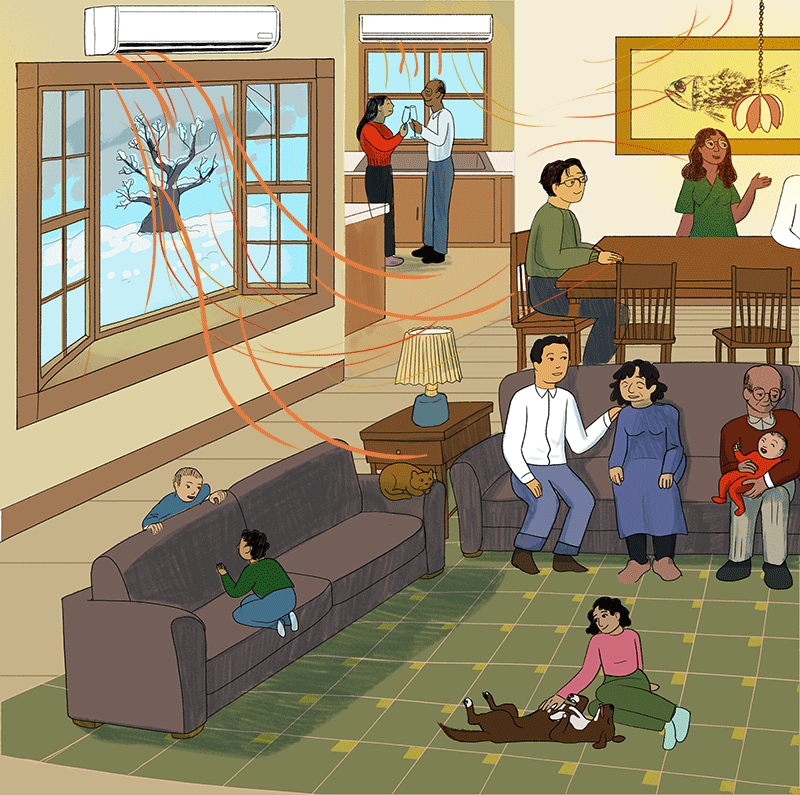
Using this incredible technology,
heat pumps can warm and cool our spaces
— and, heat our water and dry our clothes. Heat pumps can even be used now in industrial food manufacturing processes.
Heat pumps used for space heating and cooling come in all shapes and sizes.
The most common are air source and ground source.
Ground-source heat pumps are generally more expensive to install, but they are durable, often lasting for up to 50 years.
Air-source heat pumps move heat from the air, whereas, you guessed it, ground-source heat pumps transfer heat to or from the ground.
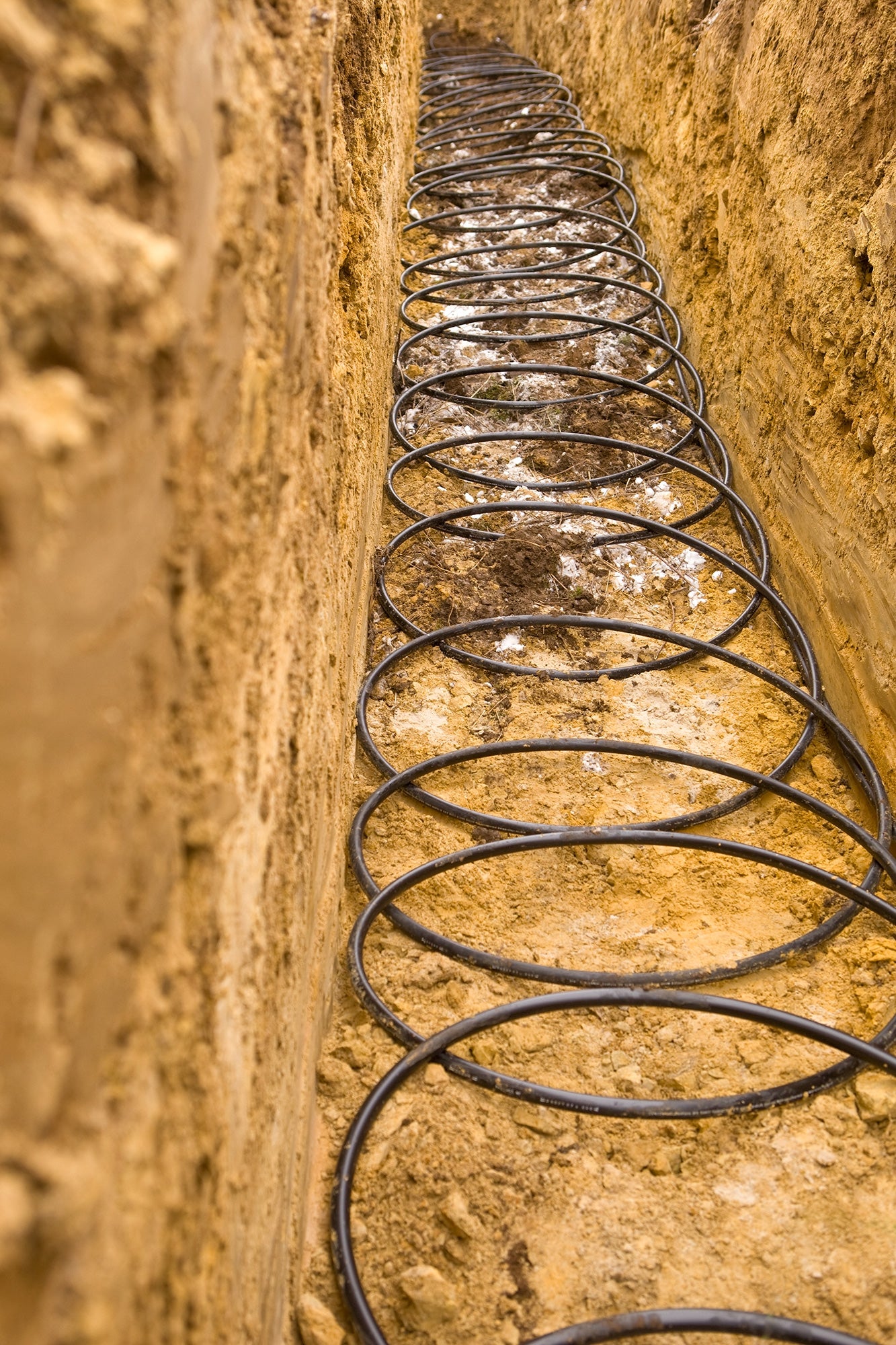
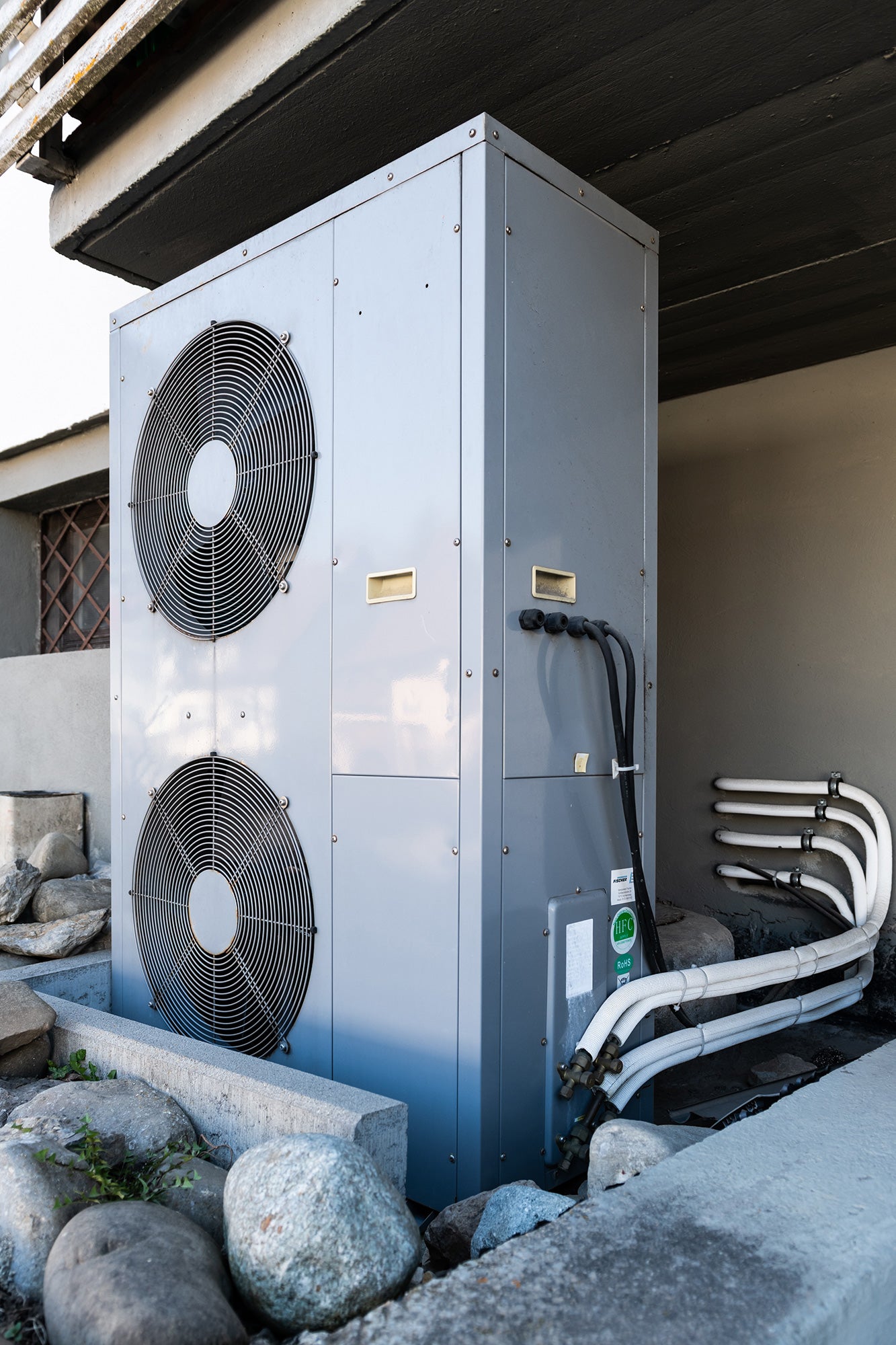
Underground geothermal coils connect to a ventilation system to heat and cool a residential home. (From left: BanksPhotos / Getty Images; Silas Stein / picture alliance via Getty Images)
Air-source heat pumps move heat from the air, whereas, you guessed it, ground-source heat pumps transfer heat to or from the ground.
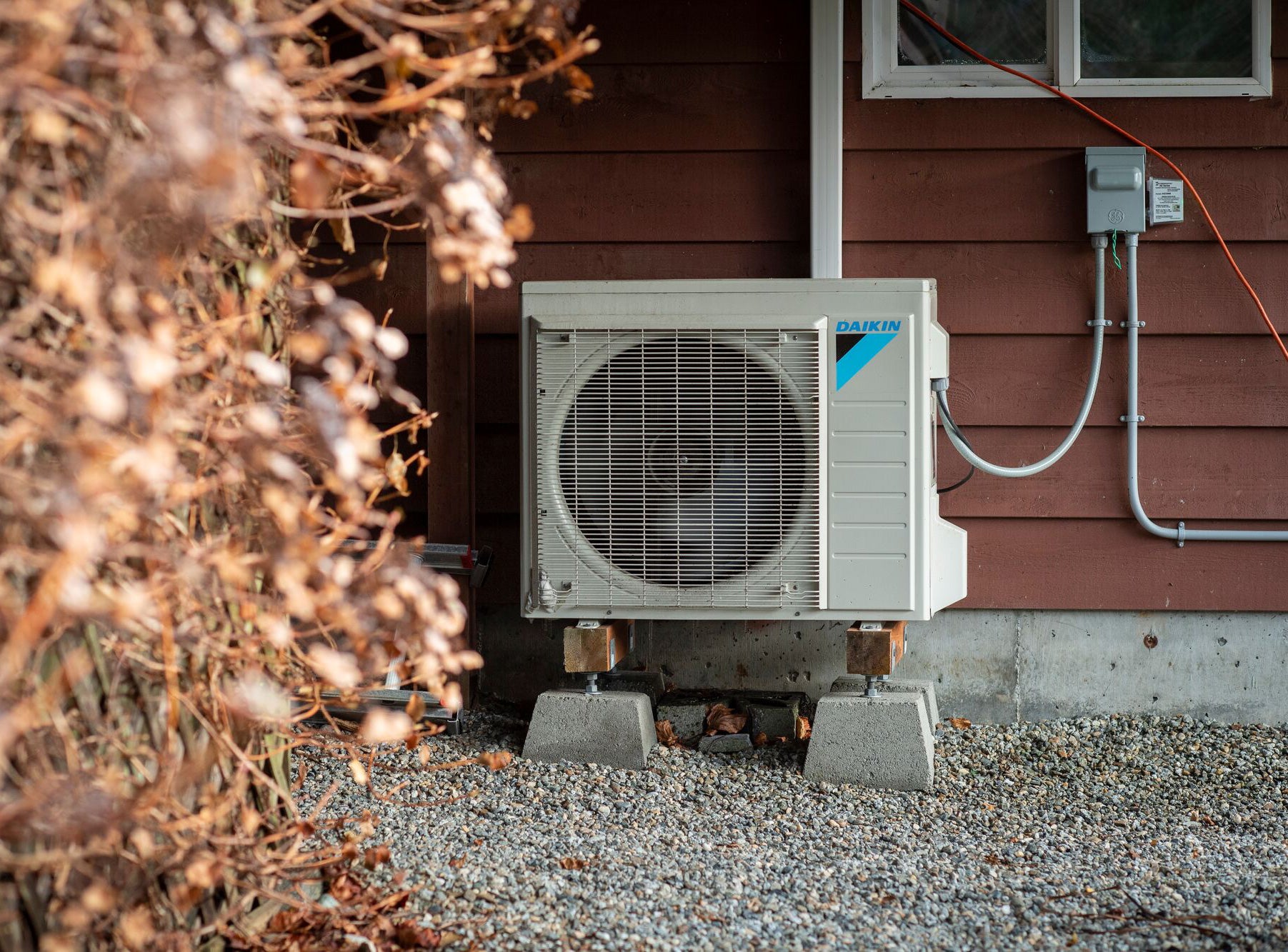
The outside unit to an air-source heat pump system at a home in Juneau, Alaska. (Michael Penn for Earthjustice)
There are also ducted or ductless systems.
Ducted heat pump systems are central heating and cooling systems, with those familiar metallic tubes that carry warm and cool air to multiple rooms at once.
Ductless heat pump systems cool and heat buildings room-by-room.
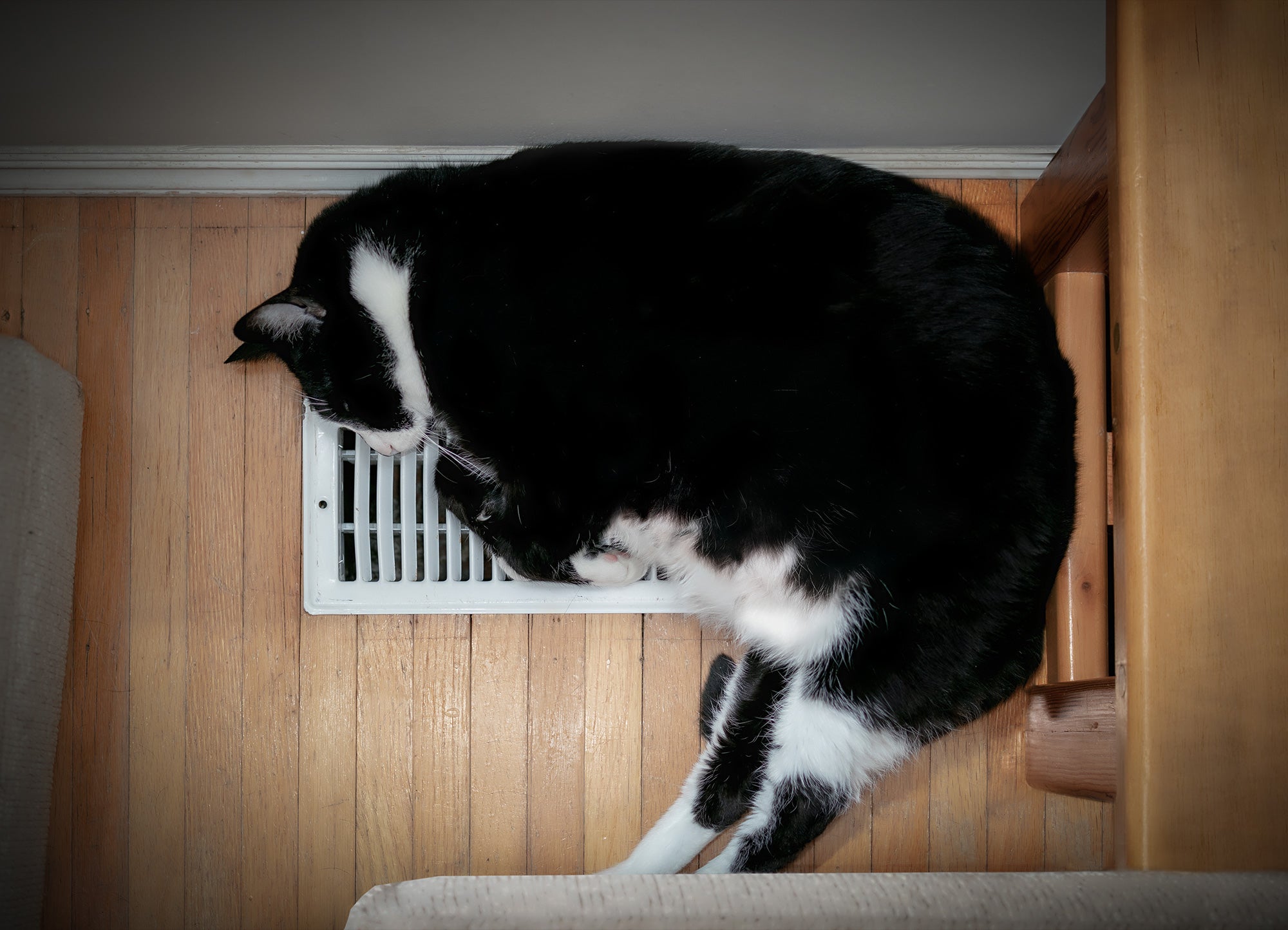
Ductless heat pump systems cool and heat buildings room-by-room.
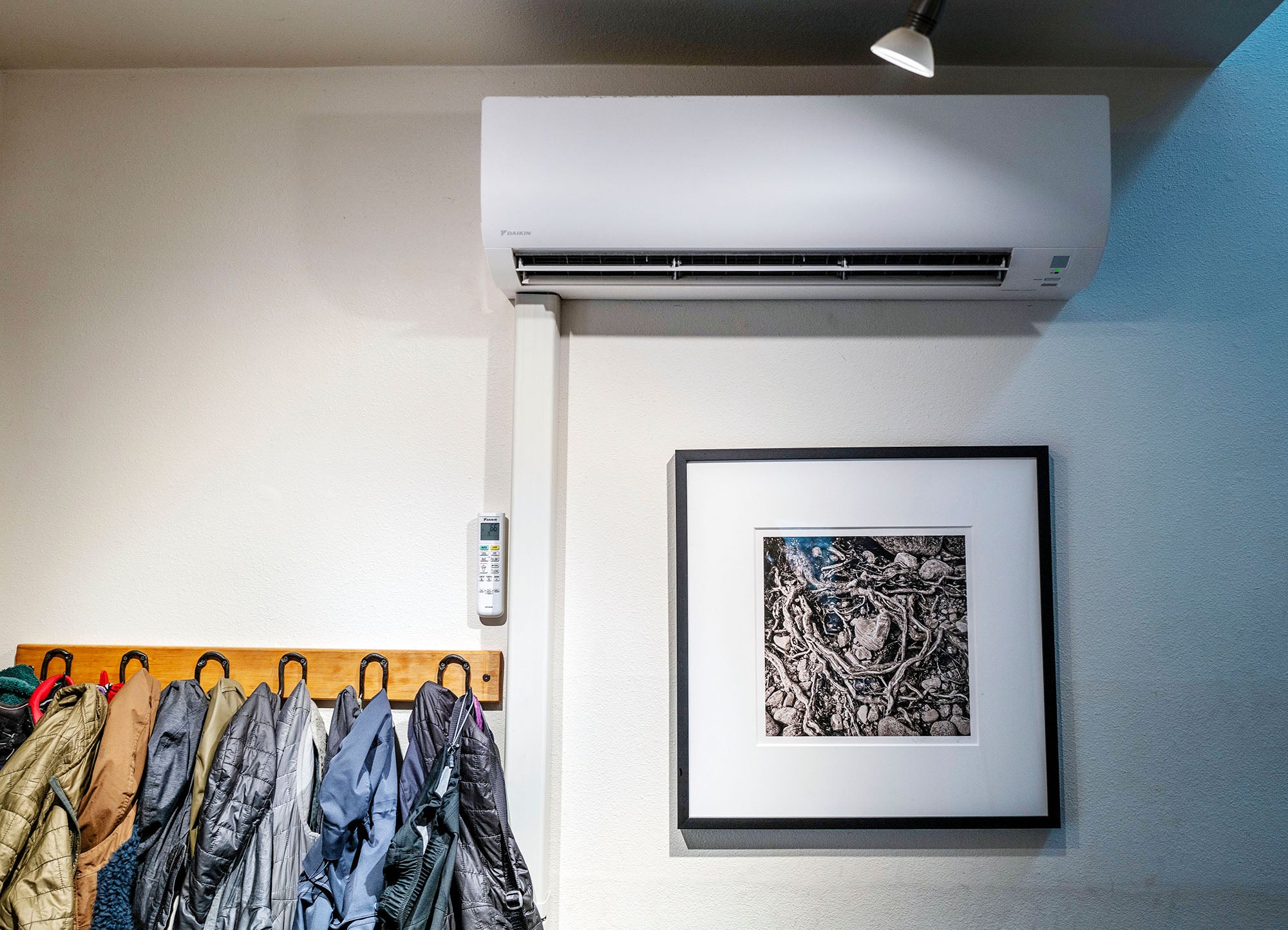
The inside unit to a ductless heat pump system at a home in Juneau, Alaska. (Michael Penn for Earthjustice)
Frigid Climate? No Problem.
Heat pumps can even provide heating when it’s extremely cold out. In fact, certain heat pump models can work in temperatures as cold as -31°F.
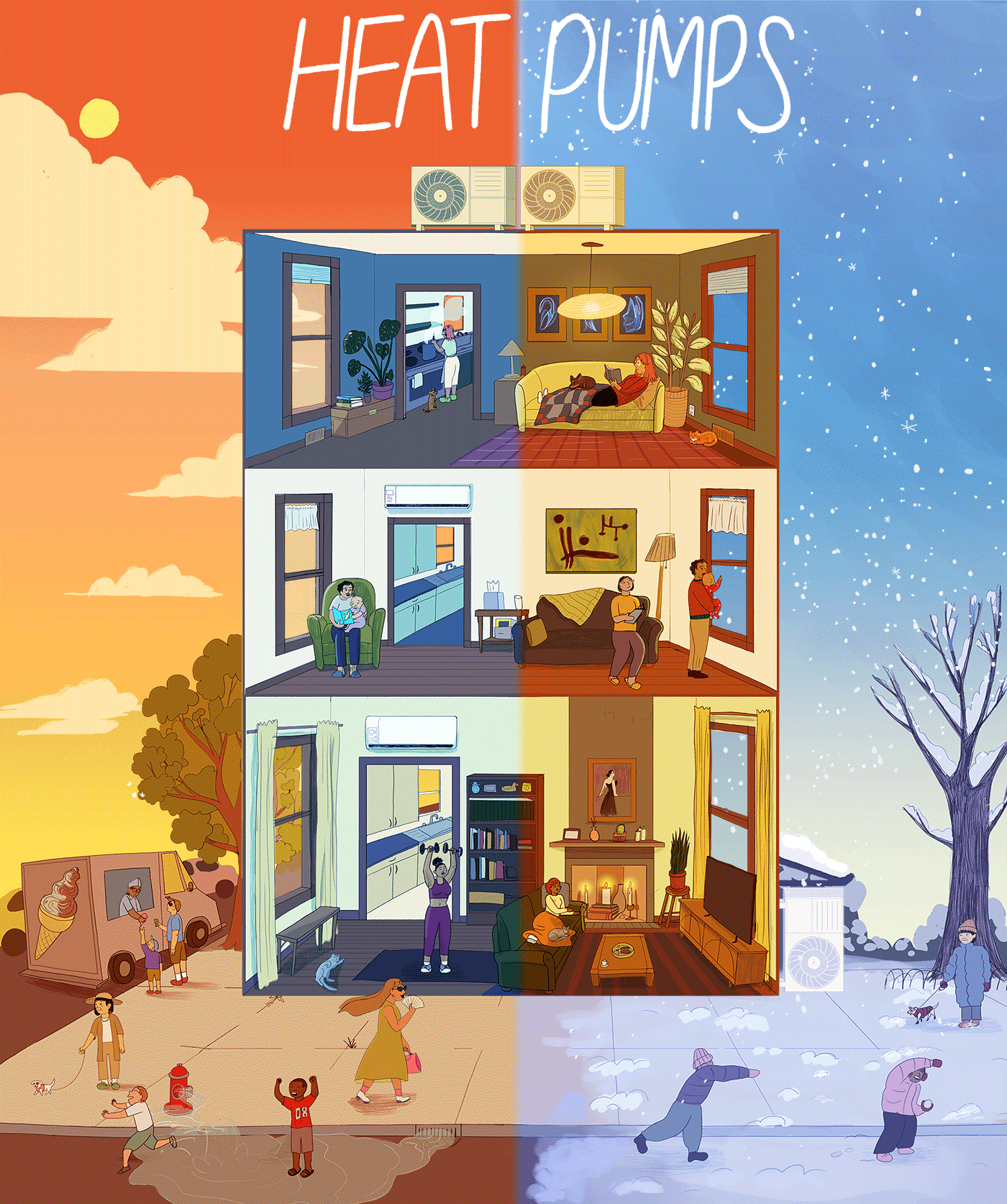
Don’t just take it from us:
People in Maine are falling hard for heat pumps. Maine set a goal of installing 100,000 heat pumps by 2025. Mainers were so enthusiastic about making the switch that the state met their goal two years ahead of schedule.
In Juneau, Alaska, 1 in 7 homes now has a heat pump. The city began the switch as the cost of heating oil rose. City leaders set targets, and a local nonprofit helped Alaskans make the switch. Heat pumps are quickly gaining popularity in cold-climate states.
Marianna Casagranda of Freeport, Maine, migrated her home from propane heating to electric heat pumps. (Tristan Spinski for The Washington Post via Getty Images)
In Juneau, Alaska, 1 in 7 homes now has a heat pump. The city began the switch as the cost of heating oil rose. City leaders set targets, and a local nonprofit helped Alaskans make the switch. Heat pumps are quickly gaining popularity in cold-climate states.
Andy Romanoff, Executive Director of Alaska Heat Smart, with a newly installed a heat pump at his home in Juneau. (Michael Penn for Earthjustice)
Heat pump water heaters come in a range of tank sizes with models now on the market that can plug into a standard 120 volt outlet.
In addition to eliminating climate and air pollution from water heating in buildings, heat pump water heaters dehumidify and cool spaces around them and can act as a battery by being programmed to heat water in the middle of the day when solar energy is abundant for use in the evening.
Why Heat Pumps are Better for the Planet
This is where our hero heat pump comes in.
Most homes in the United States burn fossil fuels like methane gas, heating oil, or propane for heat. This way of keeping warm during chilly winter nights is driving climate change.
13% of climate pollution in the United States comes directly from fossil fuel use in our homes and buildings, largely from burning methane gas for heat.
Heat pumps don’t burn a thing, which translates to truly impressive emissions reductions. Experts estimate that heat pumps can reduce climate pollution from buildings by 40% or more.
Running heat pumps on even the dirtiest energy grid in the lower-48 is still far better for our climate, according to the National Renewable Energy Laboratory.
Heat Pumps Make for a Healthier Home
Heat pumps don’t release health-harming pollution into the air like gas furnaces, so by getting more heat pumps in homes across the country, we can save thousands of lives.
Burning gas in our buildings is a little-known culprit of air pollution like NOx or PM2.5 that increase our risk for lung disease, heart problems, reduced cognitive function, and premature death.
According to Rewiring America, if everyone in the U.S. upgraded to heat pumps, the country would experience each year:
- 3,400 fewer premature deaths
- 1,300 fewer hospital admissions
- 220,000 fewer asthma attacks
The big switch would save Americans $40 billion in health benefits annually.
Swapping out
polluting furnaces,
water heaters,
and dryers
for heat pumps in the U.S. would deliver the air quality equivalent of taking 40 million gas-powered cars off our roads.
Plus, heat pumps make spaces more comfortable and livable.
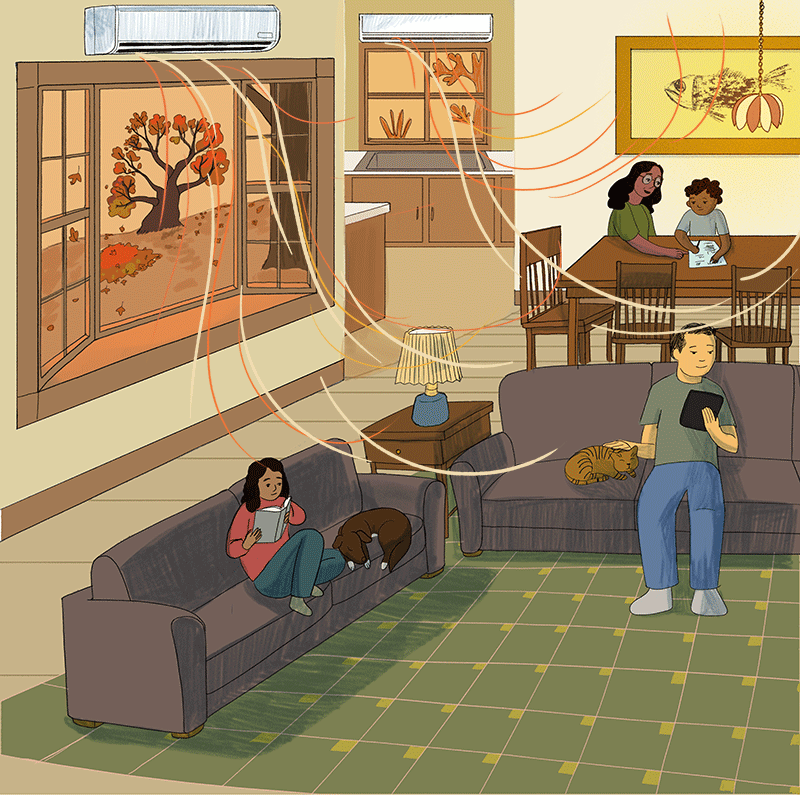
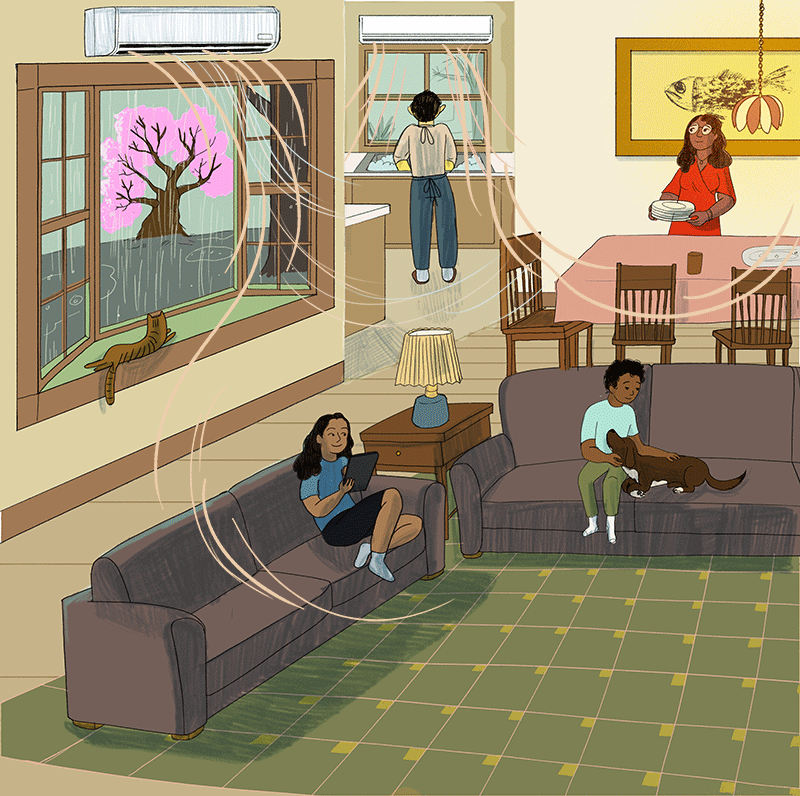
You can think of a traditional fossil fuel furnace like your bathtub. When you take a bath, the water stays hot for a few minutes, but then you have to add more hot water to keep the temperature up.
Fossil fuel furnaces work the same way, constantly oscillating between too hot and not hot enough.
Heat pumps, however, are the goldilocks appliance, maintaining a consistent temperature all the time.
Heat Pumps are the New Norm, Not a Niche.
We are past the “early adopter” phase. Heat pumps have entered the mainstream market in a big way. There are now many options to meet the needs of all types of homes and buildings.
Gradient is installing renter-friendly all-weather window heat pumps that look a whole lot better than the air conditioning units of yesteryear. They are easy for people living in apartment buildings to install and don’t require securing new permits.
Quilt is creating heat pumps that are compact and quiet, taking a design-forward approach to make heat pumps less obtrusive.
Harvest Heat Pumps are designed to “harvest” and store energy from the grid when it’s cheapest to provide both space and water heating. These heat pumps reduce emissions by 90% and save people 30% on their energy bills.
Heat pump water heater and heat pump dryer models are now available that can plug into standard 120 volt outlets, avoiding potential need for electric upgrades.
Heat Pump Innovation is Driving Widespread Adoption
Heat pumps have now become the new standard as more people learn about their benefits:
- In 2022, for the first time ever, more Americans bought heat pumps than fossil fuel furnaces.
- In 2023 and 2024, heat pumps sales continued to outpace fossil fuel furnace sales.
Taking Advantage of Federal Incentives
Policymakers are trying to match consumer appetite with incentives to accelerate adoption because despite the exploding demand, it’s still fairly expensive to install a heat pump.
While the Trump administration threatens these critical incentive programs, the funding and tax credits are still flowing — for now.
- The average installation cost in an existing home is around $10,500, but the Inflation Reduction Act passed in 2022 includes tax credits and rebates to bring that number down.
- Customers who purchase a heat pump can receive a $2,000 tax credit. Low-income households who make the upgrade can receive up to $8,000 in rebates through programs in about a dozen states called HEAR (Home Electrification and Appliances Program).
Get Started on Your Electric Journey Today
Replacing polluting gas appliances with clean electric alternatives can seem like a daunting task. Here’s a checklist of resources to get you started
Make a personalized electrification plan to map out which projects to tackle first.
Rewiring America has a tool for both homeowners and renters.
Does your A/C need to be replaced?
If so, now is a great time to get a heat pump. They cost about the same as central A/C and have similar installation requirements.
Bonus: You get clean heating at the same time, and you can take furnace replacement off your list.
Add rebates to your budget.
Here’s a handy electrification rebate calculator to see how much you can save.
Find a reliable heat pump installer with this HVAC contractor guide.
Pick your pump.
The Switch Is On has helpful resources and how-to guides about choosing the most cost-effective heat pump options.
The movement is growing, the tech is getting better and better, and governments are making it easier and more affordable for people to experience the joy of owning a heat pump.
If you’re still not convinced, listen to this slow jam about heat pumps. Just trust us.
Have you installed a heat pump in your home?
We’d love to hear about your experience! Please send us a note about how installation went and how your home is faring with the new technology in place. We’d like to hear about what kind of climate you live in, and if you use the heat pump for air conditioning and heating. Feel free to share a photo or two of you and your heat pump!
Earthjustice's Right to Zero campaign — first launched in California in 2017, and since expanded to New York, the D.C. region, and beyond — is working to electrify everything and power it all with 100% renewable energy. Zero emissions technology is here today. A transition that once seemed impossible even a decade ago is now reshaping our lives.
